Jefferson Lab Advances the State of Science in Nuclear Physics
Jefferson Lab is a nuclear physics research facility operated for the Office of Science of the US Department of Energy by the Southeastern Universities Research Association (SURA). An international community of about 2,000 scientists conducts research to increase the understanding of the structure of matter and the forces that hold the atom's nucleus together. By smashing electrons into atoms in JLab's Continuous Electron Beam Accelerator Facility (CEBAF) the scientists have already mapped the structure of the proton to an unprecedented level.
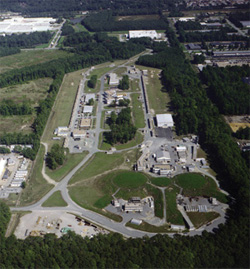
Figure 1: Aerial View of the Jefferson Lab Facility in Newport News, VA, USA (Courtesy of Jefferson Lab)
| |
Superconducting electron accelerating technology makes Jefferson Lab unique. The electron beam recirculates up to five times through two linear accelerators to reach energies up to 6 billion electron volts (GeV). The beam is then split for simultaneous use in three experiment rooms.
To realize new research opportunities that are beyond Jefferson Lab's present capabilities, the accelerator facility and its experimental equipment are now in the process of upgrading to new components that will double the energy of the electrons to 12 GeV.
The upgrade includes adding accelerating modules, constructing a new experimental room and upgrading the present research equipment. An aerial view of this super- conducting 7/8-mile racetrack is shown in Figure 1.
|
Accelerator Physics
Inside the accelerator, a stream of electrons races around the racetrack. A billion times per second, magnets steer and focus the electrons into a beam the width of a human hair. The accelerator is controlled and monitored by more than one hundred computers. Together, they track, manage and respond to more than 240,000 simultaneous signals and 40,000 hardware control points. Eventually, the electron beam is funneled into three experiment halls where the high-speed particles are slammed into target materials.
Scientists from around the world use the electron beam to perform experiments which refine theories about how "quarks", the small particles that combine to form protons and neutrons, behave in the nucleus. By measuring the properties of scattered particles after the electron beam collides with a target nucleus, scientists learn how quarks and the forces that hold them together interact and form the ordinary matter in the universe.
Jefferson Lab Upgrade
|
Doubling the energy of Jefferson Lab's electron beam to 12 GeV will enable scientists to search systematically for glue-rich particles. In addition, the upgrade will allow in-depth study of the proton, the balance of forces within the nucleus and quark matter in the first second of the universe.
Shown in Figure 2 is a conceptual diagram of the existing recirculating linear accelerator and the planned mechanical upgrades to it. We will focus our attention on the new front-end electronic instrumentation modules that are presently under design at JLab. These modules receive and record signals from the different types of particle detectors planned for this upgrade. A cutaway view of a particle detector is shown in Figure 3.
| |
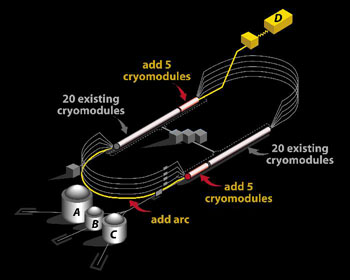
Figure 2: The Jefferson Lab Recirculating Linear Accelerator with the Planned Upgrades (Courtesy of Jefferson Lab)
|
The new experimental hall includes approximately 18,000 Flash* A/D Converter channels (ADC) and 4,300 Time-to-Digital Converter channels (TDC). These ADC and TDC channels are connected to the readout electronic modules that reside in a standard VME card enclosure. The card enclosures are known as "crates" and the new detectors proposed for the experimental hall will need approximately 70 to 80 crates. The crates provide power to the individual modules and establish a high-speed data acquisition path using defined standards for data bus protocol.
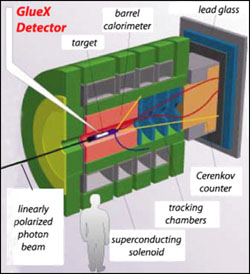
Figure 3: Cutaway View of a Particle Detector (Courtesy of Jefferson Lab)
| |
Data acquisition electronics for nuclear physics applications have taken advantage of a number of standards that define the mechanical and electrical specifications for instrumentation modules and powered card enclosures. Some of these standards date back to the late 1970's and are, for all practical purposes, obsolete.
New instrumentation modules have been designed by Jefferson Lab and the industry to take advantage of higher performance standards such as VME, VME64x and VXS which are all standards created and supported by VITA, the VME International Trade Association. The new instrumentation modules will replace the aging and obsolete modules that use the older data bus standards.
|
Pipelined Data Acquisition
The new experimental apparatus, constructed with various particle detectors, requires that the front-end electronic modules support a high trigger rate. Digitization of the input signals for analog pulse information and timing must be buffered for several microseconds, while the overall trigger is formed from all the detector sections.
Since multiple signals could not be digitized and stored in the front end modules, the older instrumentation standards did not allow for pipelined data acquisition techniques. The overall data acquisition trigger rate was limited by these non-pipelined modules and remained well below 3 kHz.
With pipeline design techniques and improvements in FPGAs, the digitization process can be increased at the front end and the information can be stored until the trigger processing is completed. The design goals for the new experiment are a 200 kHz trigger rate with approximately 5 kbytes of event data. This corresponds to an overall data acquisition rate of 1 Gigabyte per second.
Creating the Trigger
The instrumentation modules connected to the detector sections that form the trigger, must transfer information from each module in the crate to a central collection module. Each module produces a digital sum of the signals that are present on each input channel. The sum signal from each module is collected and added to the other modules in the crate. The crate sum is the first level of trigger processing for the overall experiment trigger. All the crates that collect signals from detector sections responsible for the trigger are ultimately summed again to create the "Physics Event" trigger signal. This final trigger signal is distributed to all the front-end instrumentation modules and initiates the readout of stored data in the modules.
Designing with VXS
The VITA 41 VXS specification provides the capability for connecting each module in a data acquisition crate with a central collection module. The VXS standard defines high speed, multigigabit serial connections from each VME64x module slots to a central collection module. The Electronics and Data Acquisition groups at Jefferson Lab have embarked on a design that takes advantage of the high speed backplane designs that the VXS standard has created. This standard allows JLab to use legacy VME/VME64x modules in a VXS crate, to develop modules that will be used in the final design of the data acquisition system for the detector systems constructed for the 12 GeV upgrade.
Commercial crate and backplane designs to support the VXS specification have been researched at JLab. To support the plans for designing front end electronic modules and testing vendor backplanes, JLab purchased the Pentek Model 6822 Dual Channel 215 MHz, 12-bit ADC VXS board.
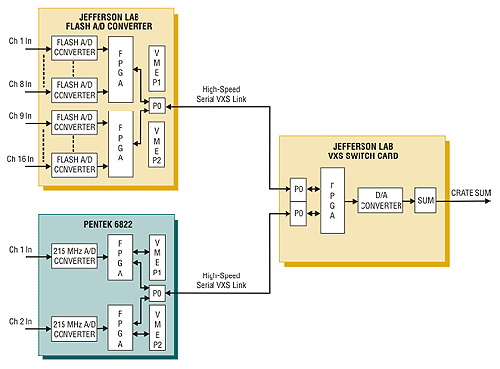 Figure 4: The Pentek Model 6822 as Used in the JLab Upgrade Tests
Figure 4: The Pentek Model 6822 as Used in the JLab Upgrade Tests
As shown in Figure 4, it provides the hardware to drive the VITA 41 backplane. The Pentek Model 6822 is unique in that it also allows the user to develop algorithms that can be loaded to the on-board FPGA for signal processing. The preprocessed data is then transferred through the VXS backplane to the central collection module. The 6822 will be used to test data processing routines, and to verify the central collection module development and design effort.
Commercialization
Through its technology commercialization programs, SURA is collaborating with other national labs, universities and the private sector to find practical applications for these technologies. Exciting examples include medical imaging for early detection of cancer and security scanning devices.
Through the active pursuit of applying research to meet the needs of the commercial marketplace, SURA's technology transfer program seeks to positively impact the economy and improve people's lives in ways that have never been considered before.
Also See:
* Flash ADC: Also called the parallel A/D converter, this circuit is the simplest of ADCs. It consists of a series of
comparators, each one comparing the input signal to a unique reference voltage. The comparator outputs connect
to the inputs of a priority encoder circuit, which then produces a binary output.
Quarks and the Strong Force
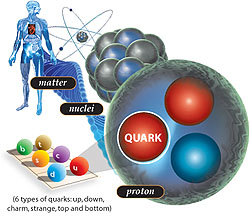
Quarks and Gluons
| |
From the stars overhead to the atoms in our own DNA, all matter is composed of fundamental particles — particles that cannot be divided into smaller parts. Quarks are among the few fundamental particles in the universe. There are six types of quarks: up, down, charm, strange, top, and bottom. The lightest quarks, called up and down, are the most common.
Quarks are bound to each other by the strongest force in the universe. Called simply the "strong force", this enormous force binds them so tightly that one quark cannot exist by itself. Glued by the strong force, quarks are the building blocks of matter as we know it. Understanding quarks and the strong force is fundamental to the universe, our world, and us.
|
|
Quarks stick together and won't come apart. When pried even one proton's width apart, quarks experience ten tons of force pulling them together. Quarks are so small that we have not been able to measure their size; they take up less than one billionth of the space inside the proton, and make up only a few percent of its mass.
|
So, what takes up the rest of the space and gives protons the rest of their mass? The strong force itself, via carrier particles called "gluons". This binding glue surrounds and connects the quarks and generates 98% of the universe's visible mass. Scientists have discovered that nature builds particles in hundreds of ways from these tiny quarks and forceful gluons.
|
|








